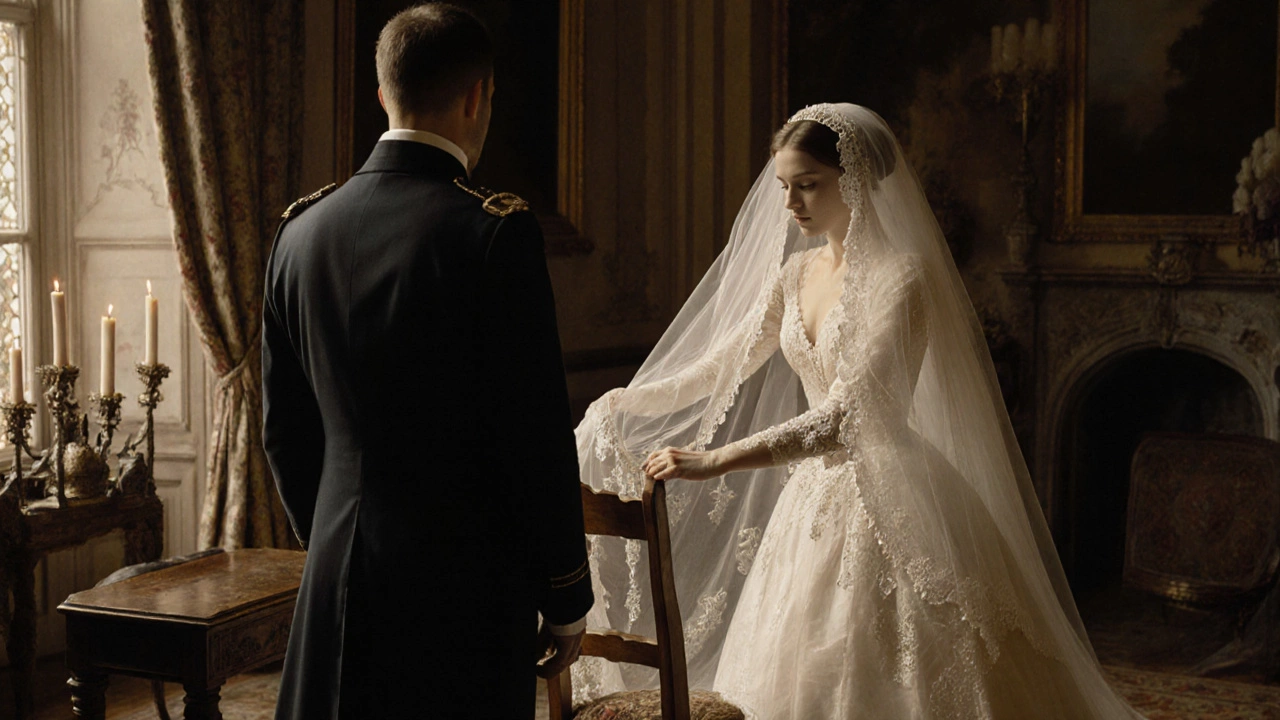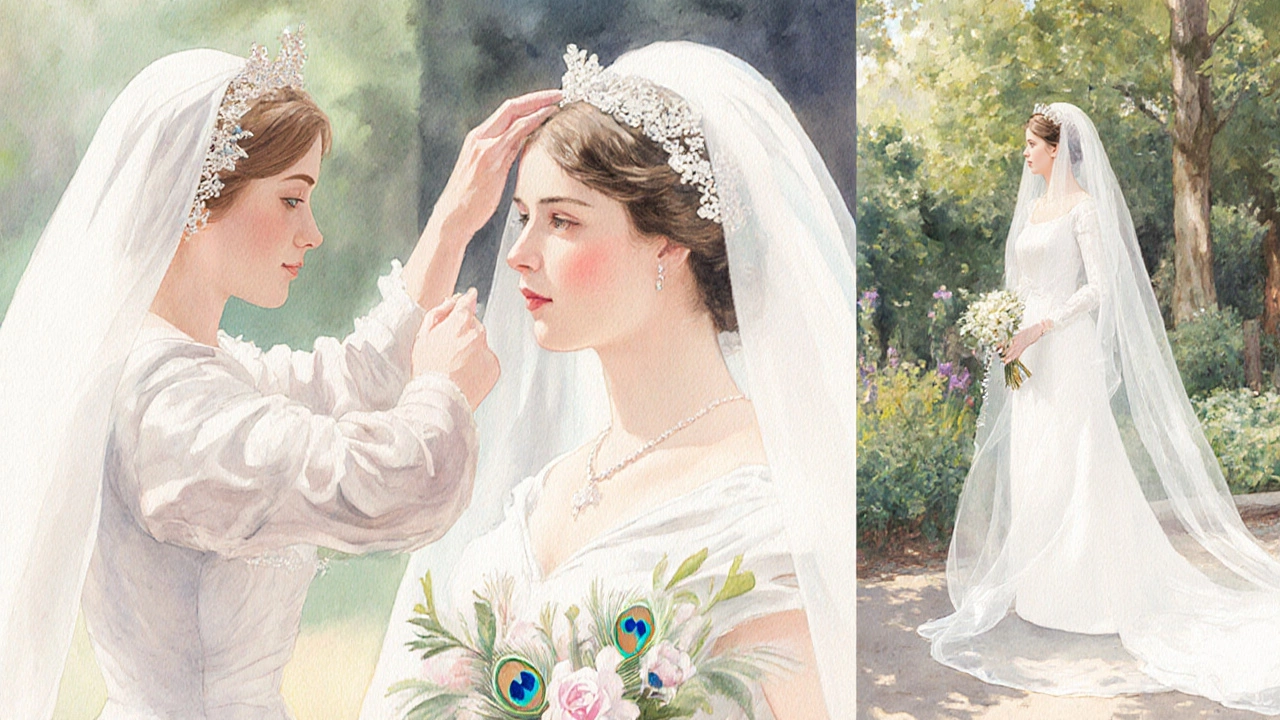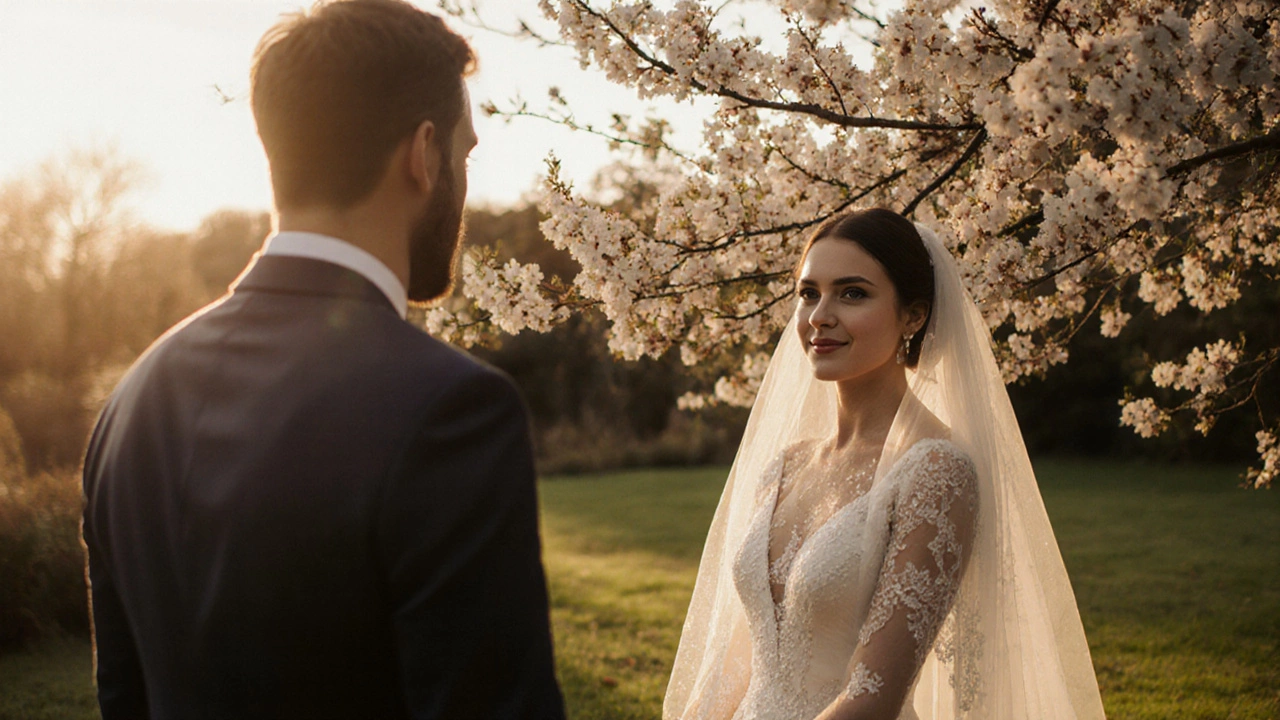The Secret Behind Keeping the Groom Blind to the Wedding Dress
 Sep, 28 2025
Sep, 28 2025
Wedding Dress Reveal Style Selector
This tool helps couples choose between a traditional wedding dress reveal and a modern "first look" based on their preferences and priorities.
How important is tradition to you?
Do you prefer more intimate moments or dramatic ones?
Are you concerned about the groom's comfort level with surprises?
When planning the big day, wedding dress is the centerpiece of the bride’s look, traditionally kept hidden from the groom until the ceremony. Many couples wonder why the wedding dress tradition keeps the groom out of the dress’s first sight.
- It’s rooted in centuries‑old symbolism and superstition.
- Modern couples often blend tradition with the "first look" trend.
- Understanding the why helps you decide how to involve the groom.
- Practical tips can prevent awkward moments on the day.
- Checklists keep both parties on the same page.
Where the Custom Comes From
Historically, the practice of shielding the groom from the bride’s dress dates back to medieval Europe. In those days, marriage was as much a business deal as a love story, and families used the reveal to showcase wealth and status. The veil-often a bridal veil a sheer or lace covering that symbolized modesty and purity-served as a literal curtain, covering the dress until the moment of unveiling.
Across cultures, similar customs emerged. In traditional Indian weddings, the bride’s saree is hidden behind a decorative backdrop until the groom lifts it during the "Jaimala" ceremony. In Japanese Shinto rites, the bride’s kimono is kept out of sight until the san-san-kudo toast. The common thread? A belief that the first visual impression should be dramatic, sacred, and untainted by premature familiarity.
Why the Groom Is Kept in the Dark
Three main reasons underpin the tradition:
- Surprise and romance. A sudden glimpse heightens emotion. Think of a movie climax-the hidden dress makes the moment feel cinematic.
- Symbolic purity. The veil and unchanged dress represent the bride’s untouched status until marriage, reinforcing the idea of joining two pure lives.
- Superstitions. Old wives’ tales warned that if the groom saw the dress early, bad luck-like a broken shoe or a rainstorm-could follow.
Even though many of these beliefs feel quaint today, they still influence how couples plan their timelines.
Modern Shifts: The Rise of the "First Look"
In the last decade, photographers and couples have popularized the "first look"-a private moment before the ceremony where the bride reveals herself to the groom. This shift isn’t about abandoning tradition; it’s about tailoring it.
Photographers love the genuine reactions, and couples appreciate the calm before the whirlwind. Yet, the "first look" can clash with the classic veil‑and‑reveal ritual if not managed carefully.
| Aspect | Traditional Reveal | First Look |
|---|---|---|
| Timing | During ceremony, after the groom walks down the aisle | Usually 30‑60 minutes before ceremony, in a private spot |
| Emotional impact | High drama, audience witnesses the moment | Intimate, allows the couple to compose themselves |
| Photographic benefit | Limited candid shots, mostly ceremony‑wide | Plenty of close‑up, natural reactions |
| Traditional adherence | Fully respects historic customs | Modern adaptation, may dilute symbolism |

How to Keep the Groom Involved Without Breaking Tradition
If you love the mystery but still want the groom to feel part of the dress journey, try these ideas:
- Schedule a private fitting where the groom watches only the silhouette, not the details.
- Share fabric swatches and sketches in advance; the groom knows the style but not the final look.
- Plan a "veiled reveal" where the groom lifts the veil at the altar-he still sees the moment, just not before.
- Include the groom in the accessory selection (shoes, jewelry) to balance involvement.
These compromises keep the romance alive while respecting the heritage of the ceremony.
Common Pitfalls and How to Dodge Them
Even the best‑planned weddings can hit snags. Here’s what to watch out for:
- Late dress delivery. Block off a buffer hour before the ceremony for any emergency alterations.
- Miscommunication with the photographer. Brief them on whether you’re doing a traditional reveal or a first look; they’ll set lighting and timing accordingly.
- Groom’s nerves. If he’s anxious about the surprise, a brief heads‑up that “the veil will be lifted at the altar” can calm him without spoiling the magic.
- Weather concerns. Outdoor weddings should have a backup plan for wind‑blown veils-secure pins or a clear acrylic frame keep the dress hidden until the cue.
Quick Checklist for Couples
- Decide: Traditional reveal or first look?
- Choose a trusted wedding photographer a professional who understands lighting, timing, and the emotional stakes of the reveal.
- Book a veil‑test to ensure it stays in place during the ceremony.
- Communicate the plan clearly with the officiant and venue staff.
- Schedule a final dress rehearsal the day before.
- Keep a small emergency kit (safety pins, hairspray, lint roller) on hand.
When Tradition Meets Modern Love
At its core, the "can't see the wedding dress" rule is about creating a shared emotional peak. Whether you cling to the veil‑lift or swap it for a tender first look, the goal stays the same: a moment both of you will remember forever. Embrace the history, tweak it to fit your personalities, and enjoy the surprise when the curtains finally part.

Frequently Asked Questions
Is it okay to let the groom see the dress during a dress rehearsal?
Yes, many couples use the rehearsal as a private chance for the groom to catch a glimpse without the audience. Just keep it brief and avoid full lighting to preserve the surprise for the ceremony.
What if my groom is extremely nervous about the surprise?
A gentle heads‑up-like telling him the veil will be lifted at the altar-can soothe nerves while still keeping the visual reveal intact.
Can we incorporate cultural customs into the veil‑lift?
Absolutely. Many couples blend traditions-think of adding a traditional song while the groom lifts the veil, or incorporating a family heirloom into the dress.
How does a first look affect the wedding timeline?
It adds roughly 30 minutes for photos and private time. Adjust the schedule by moving the cocktail hour later or starting the ceremony a bit later.
Do venue rules ever prohibit the veil‑lift?
Some historic venues have strict ceremony scripts. Talk to the coordinator early; if needed, you can do a subtle veil‑lift during the processional.